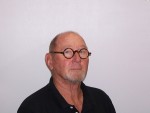Public Improvements Take a Step Backwards

When I was growing up in the late ‘40’s and ‘50’s, going camping was what middle class families did. We would spend a couple of weeks each year in some wonderful environment, cooking and sleeping under the stars.
Even the buildings, parking lots and campsites somehow reflected the soul of the place and were able to capture the visual character of the park’s natural environment. Buildings were constructed of rough-cut wood from the adjacent forest. When barriers were needed, they were made of natural boulders. Railings and thick tables were made from heavy timbers with sizeable dimensions. Even the park rangers wore forest green clothing and smoky the bear hats. Everything was built to stay for many generations and it always blended into the natural environment with ease and respect.
Today, things are done a bit differently, as a recent venture into Crystal Cove State Park demonstrated.
The park created in the 1970’s through an agreement with the Irvine Company, remains a great asset to Laguna and to Orange County. Its 6000 acres of mostly open and natural land create breathing room in-between all the housing tracts to the north and provides a several-mile open window to the Pacific Ocean for drivers and bicyclists traveling along Coast Highway. I still give thanks each time I drive the route.
I started at the Morro campground visitor’s center, which could have easily been confused with a Caltrans maintenance facility.
From there I went to the bluff-top RV camping area. The RV sites are lined up like ocean view tract lots, very similar to what is done in residential subdivisions. Each row of RV pad sites are stepped down in elevation, but they did not achieve enough grade differential to actually make it work. Instead, you look through the trailers below to the blue water beyond.
The restroom buildings throughout the Morro camp facility were composed of basic brown cinder block, overlaid with wood board and bat and wood stained pastel yellow. To that they added a shed roof, accompanied with a trellis structure of pastel stained wood, blue in this case. Between the two structures is an unstained wood trash enclosure with a black and green dumpster in full site.
What in the world are these terrible looking buildings doing in a beautiful coastal setting?
I am guessing that someone in the state park office decided that shed roofs and pastel board and bat was the design theme, since it was so prevalent in the Crystal Cove Cottages several miles up the coast. It doesn’t come off too well and I can imagine after a few years that the maintenance issues will be a nightmare.
I then moved down to the beach parking lot, jammed right up to Coast Highway. Beach-goers must pass under the highway through a tunnel that exits on the beach side, where the whole world changes with beautiful, expansive views of the Pacific Ocean and cool ocean breezes.
This is what it’s all about; truly breathtaking.
On the beach side, there is a fairly significant lifeguard headquarters building. This building is a little better resolved then the rest of the structures in the park, but the materials are still cinder block, board and bat siding and a shed roof and pastel colors. Shed roofs are common on seacoasts, but the shed is normally angled to accommodate the prevailing winds and direction of storms. This building got it backwards.
Coming back through the tunnel to the parking and day use area, I looked back over the lower valley and all the small pastel yellow shade structures. It feels very much like the whole thing was driven by budget and maintenance; all the money went to civil engineering infrastructure, like curbs and gutters, and little money was left to deal with the park’s soul.
Also there was not a tree in sight. This is a natural valley with good soil and trees are more sheltered and could provide shade much easier then what they tried to do with the pastel wood shade structures. By the time the shade structures start to fall apart, trees would have grow large enough to provide shade.
The State Park annual pass I purchased says in big print, “A lasting Legacy, a Promise to the Future.”
I think the overall Crystal Cove State Park achieved that in spades, but the Morro Campground is a disappointment.
Roger McErlane, a member of the Laguna Beach Design Review Board, is a fellow of the American Society of Landscape Architects. A former Irvine Company vice president, he worked in community planning and design from 1996-2009.




